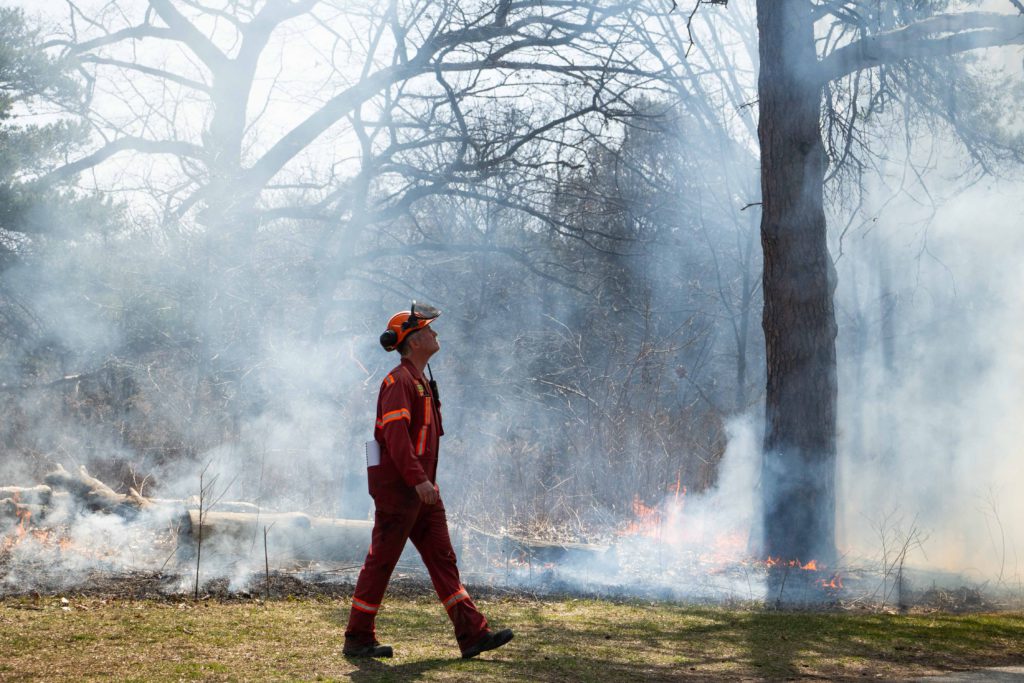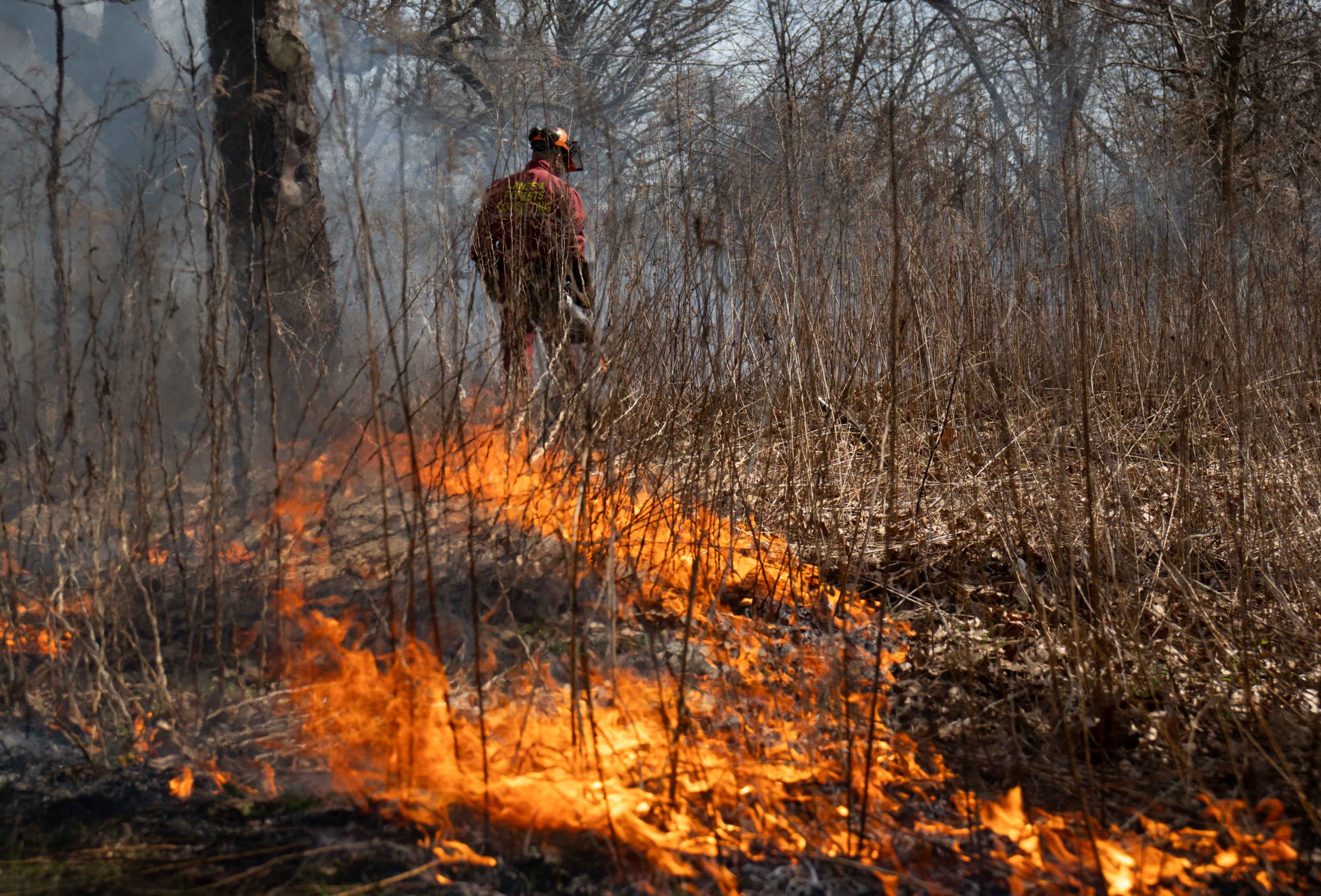High Park, a place where families come to escape the city and lounge under trees, is up in smoke. But there are no fire truck sirens or screams of panic. There is only singing, a drumbeat, and a crackling fire.
The traditional and prescribed burn, which takes place at High Park every year, is a way to nourish fire-dependent environments, such as the Black Oak Savannah the park is home to.
The burn, known as Biinaakzigewok Anishnaabeg in the Anishinaabemowin (Ojibwe) language, is a long-standing practice in the Indigenous community. The founder of Msit No’kmag, Carolynne Crawley, says, “Traditional cultural burns have been happening since time immemorial. It’s one of those responsibilities to be in a good relationship with all of creation.”
As Crawley explains, “the burns help clear the land, to make it easier for movement — not just for people, but also for animals.” Additionally, the burn helps plants and trees to germinate.
“The Black Oak Savannahs were significant for the nations living here because they provided a significant food source: the acorns,” says Crawley.
For decades, colonial ways have prevented Indigenous communities from burning off the dry bush, which has led to frequent forest fires.






For the third year in a row, the city of Toronto collaborates with the Indigenous Land Stewardship Circle to carry out the traditional burn. Manager of Urban Forestry, Ray Vendrig, feels there is much that city consultants can learn about taking care of the forests from Indigenous people.
“They teach our staff a lot about how [they] respect the land, and how everything is connected: how plants, animals, and people are connected.
“We come at it from a scientific or a forestry point of view, but to have a different point of view is very refreshing,” adds Vendrig
The ceremony requires stable, warm weather, dry ground, and a breeze to minimize smoke impacts on the populated areas, which finally happened on the morning of April 9.
The day started with a closed sunrise ceremony and a holy fire, the coal from which was used to light each section of the park. As fire crews laid out plans for the burn and blocked off affected pathways, Indigenous drummers, singers, and dancers performed the opening ceremony.
City officials reassure the public that the fire is “deliberately set and carefully controlled.” Only grass stems and small twigs are affected, and the firemen keep close watch to ensure the flames don’t catch onto the larger trees.
Before igniting each section, volunteers flush out snakes and search for turtle hatchlings to remove them from the affected areas. Crawley empathizes, “When Indigenous peoples are coming together, we’re always considering wildlife; because like I said, they’re family.”
As the delicate operation unfolds, fire chiefs and Indigenous stewards are in constant communication, checking in before lighting each section or moving onto the next one. One of the volunteers, George Gardiner, says: “The major challenge is there are so many different parties involved that not everybody is aware of everything at the same time.”

Crawley says that to repeat the success of the traditional and prescribed burn at High Park, the city needs to “continue to build relationships with Indigenous communities.”
“The city has a reconciliation strategy. And I think it’s important for there to be clear steps of what does that mean for the land? What does that look like for the animal relatives? What does that mean or look like for the plant relatives, for the waters?” she says.
“In the city of Toronto, I think about 85 per cent of all wetlands or waterways have been buried or developed upon,” Crawley adds. “The lands have been, and continue to be, harmed through these colonial and capitalist systems.”
Vendrig believes there are many other Indigenous practices that could benefit Toronto. “Some of the other things that we’re working on with members of the Indigenous community is the protection of the turtles in Grenadier Pond.
“In the west end of the city, we’ve worked with an Indigenous youth agency to create a site where they can hold educational meetings for Indigenous youth and teach them about the land,” adds Vendrig.
The traditional and prescribed burn shows how the city and Indigenous communities share a duty to care for the territory originally known in Mohawk as Tkaronto.
On the morning of the burn, Vivian Recollet, the Anishinaabe Granmother, with the spirit name “Bigasohn Kwe,” addressed the visitors, volunteers, and city staff in the opening ceremony: “We’re not asking for perfection. We’re asking that you do the best that you can.
“Today we have gathered the pieces from a long time ago that our ancestors tried to leave for us,” she says.
“On these lands we have ceremony;, there’s beautiful gifts left for us here to revive and rekindle, and take and put into our hearts’ faces. To be able to walk beautifully on Mother Earth, […] and remember our responsibility.”
— All photos by Stacey Kuznetsova

